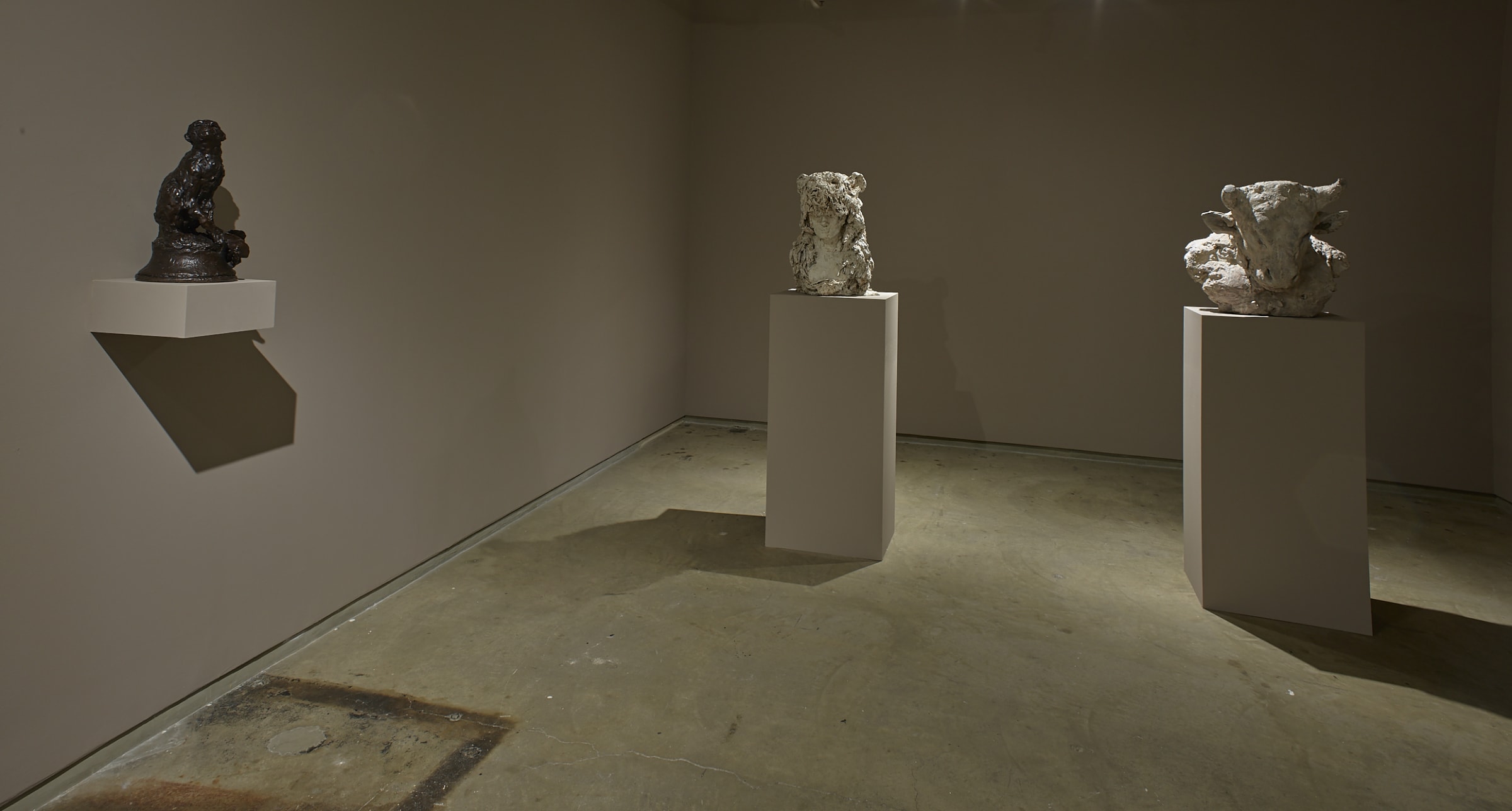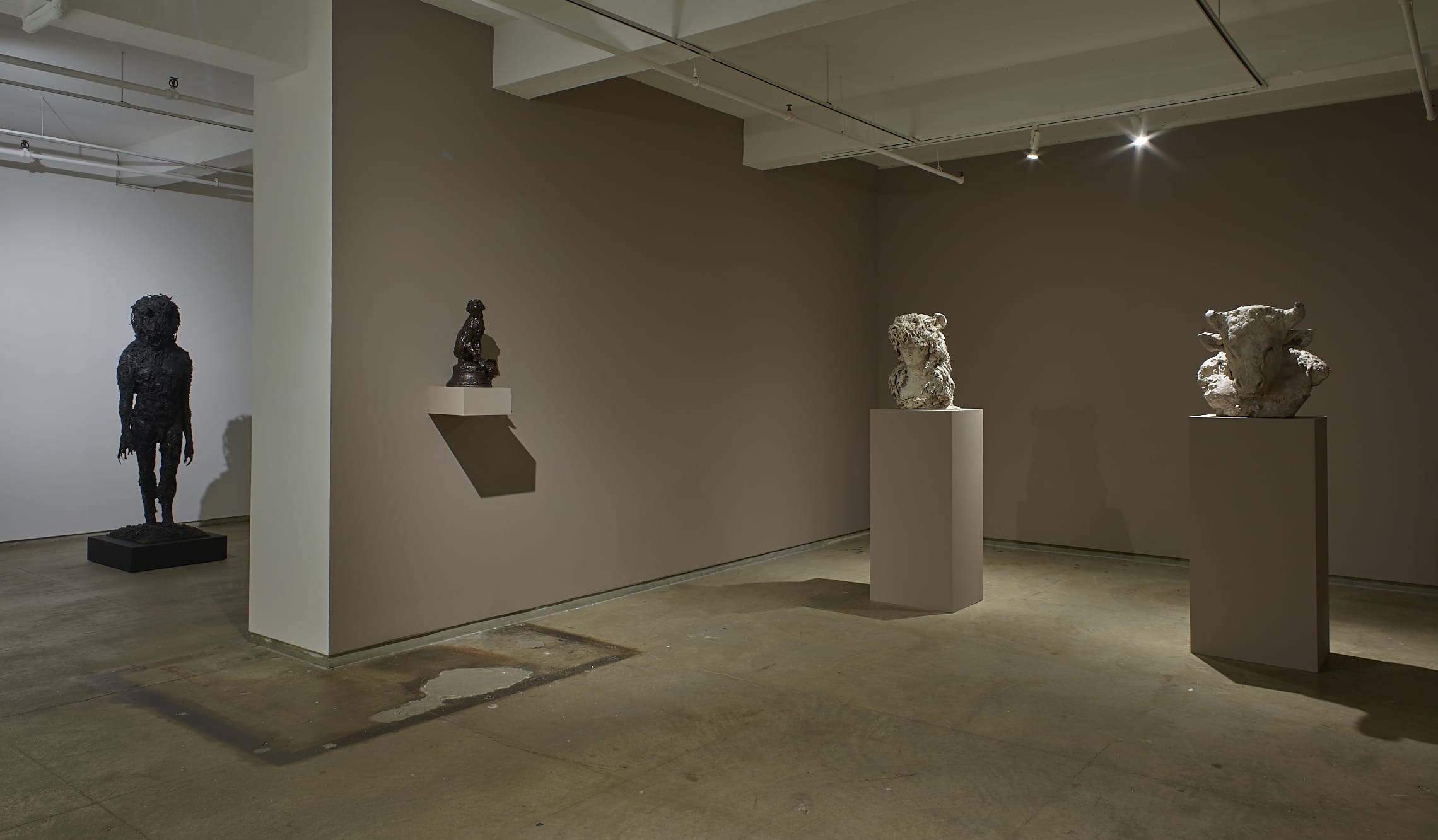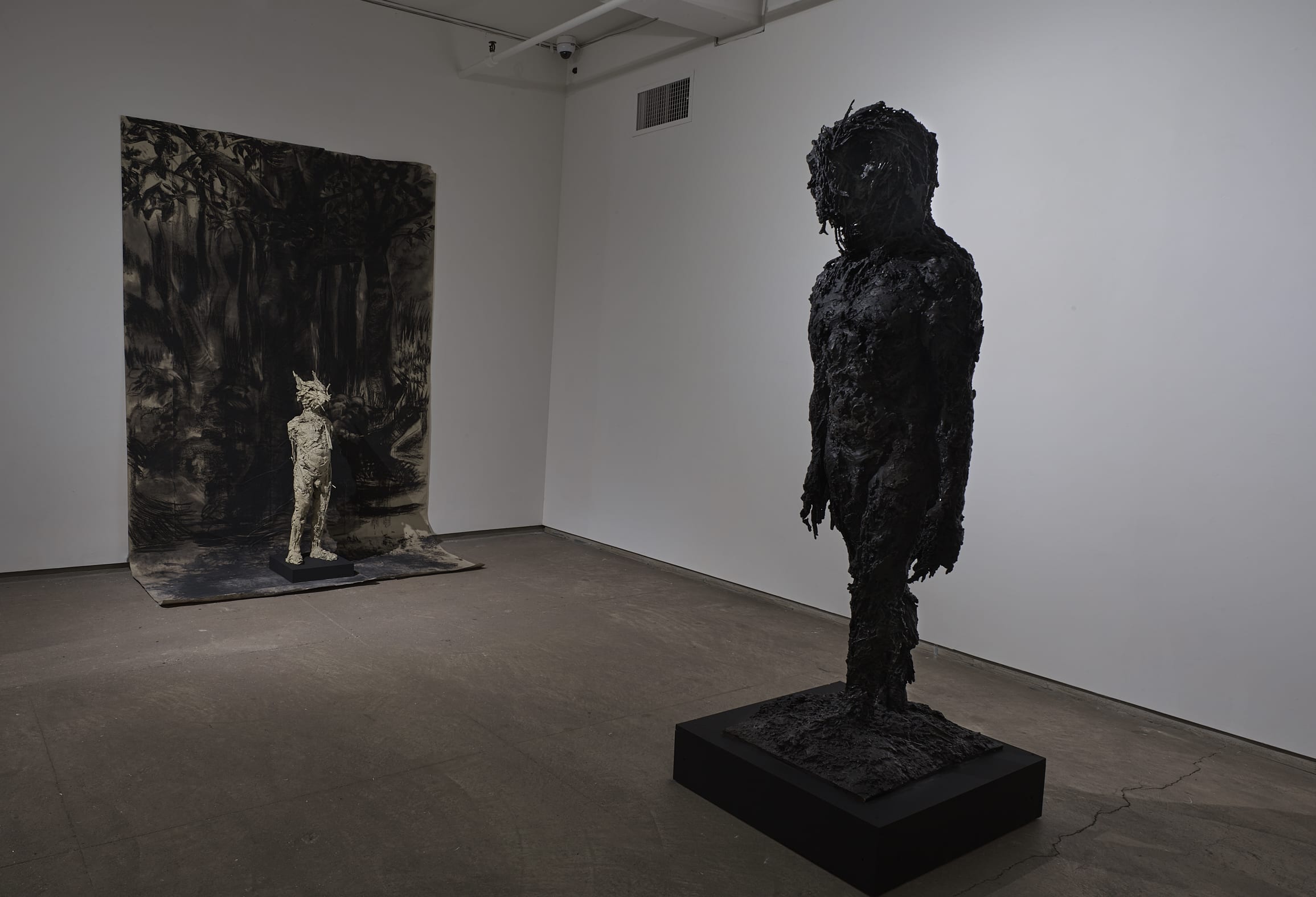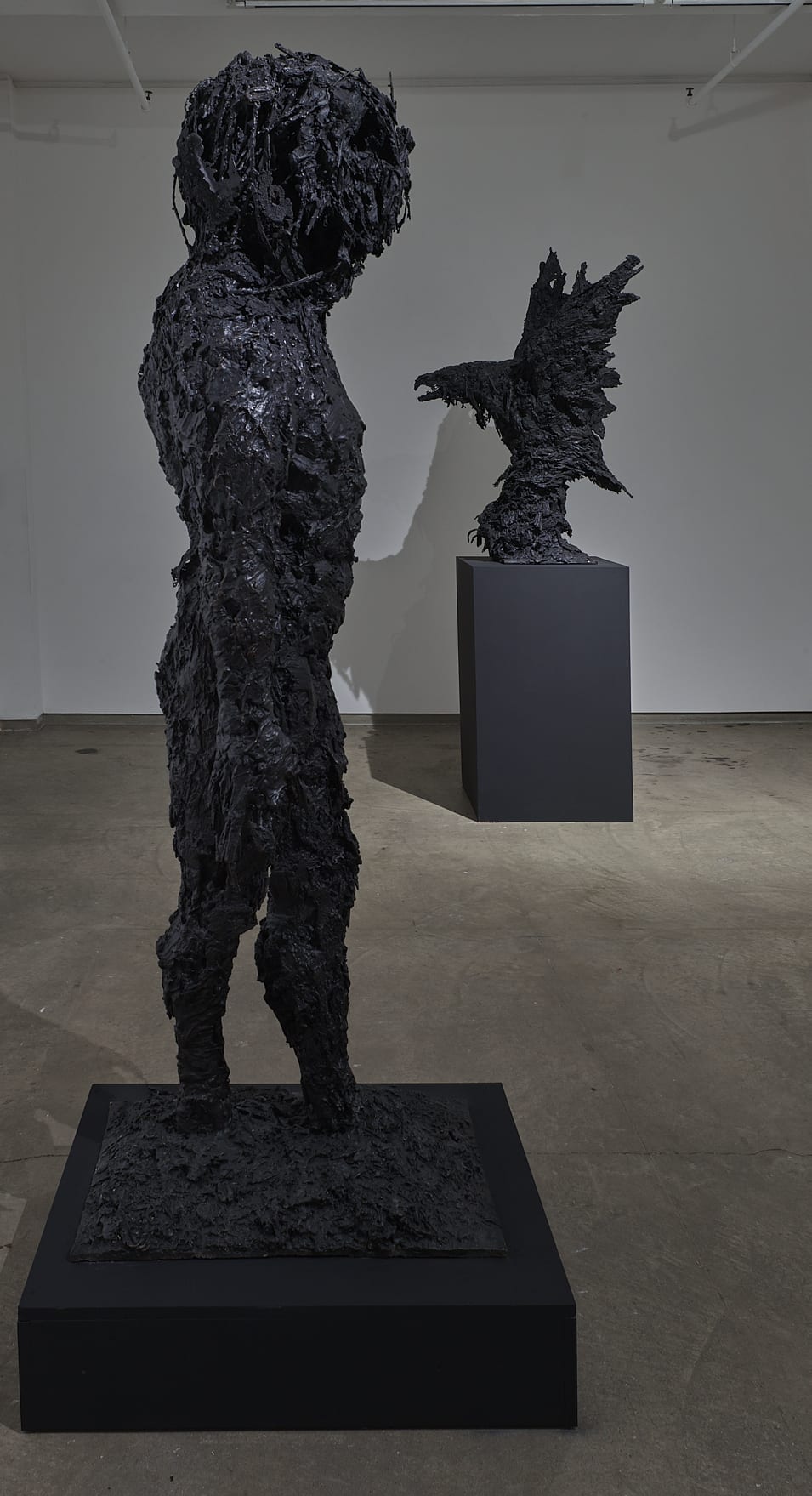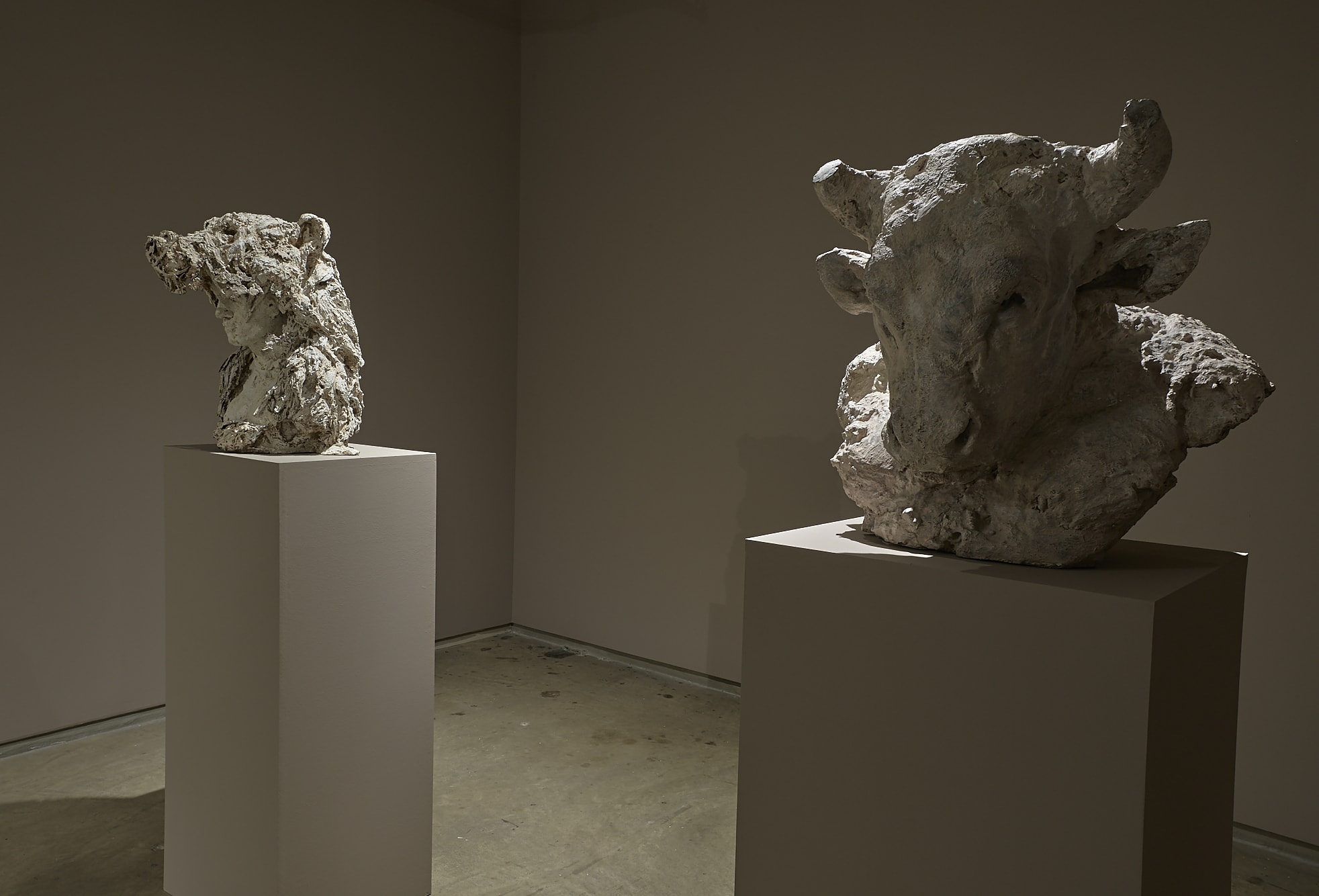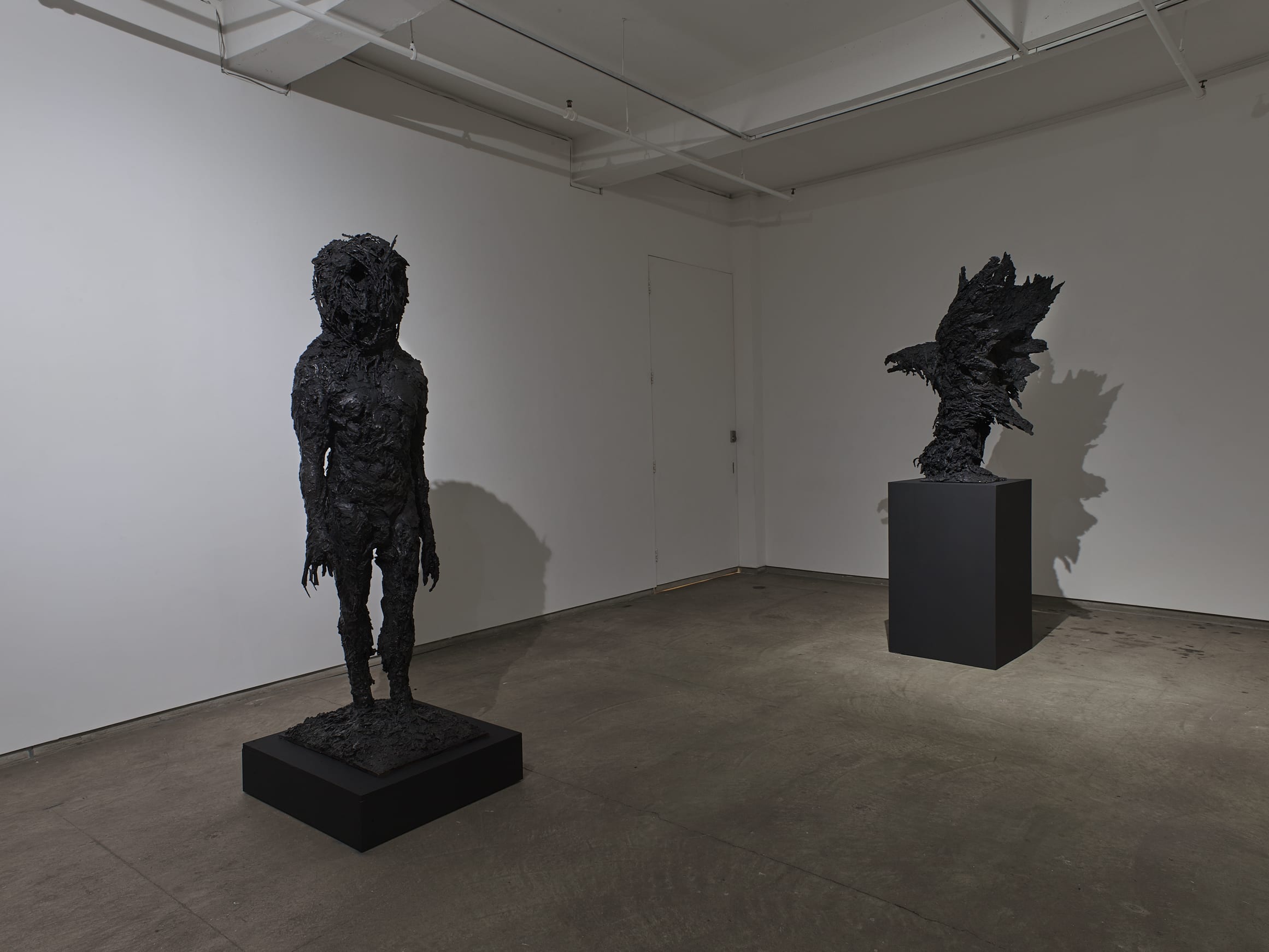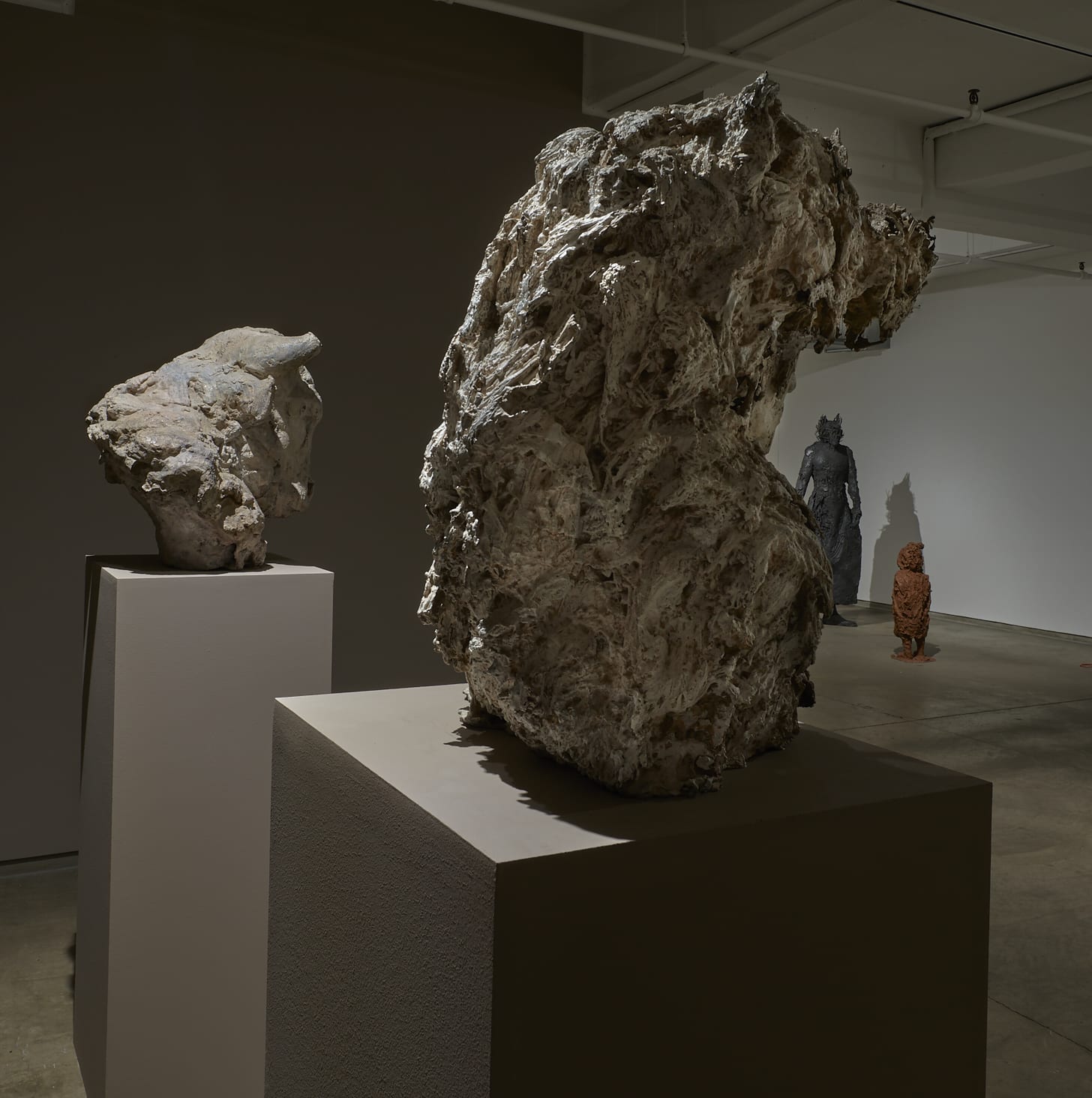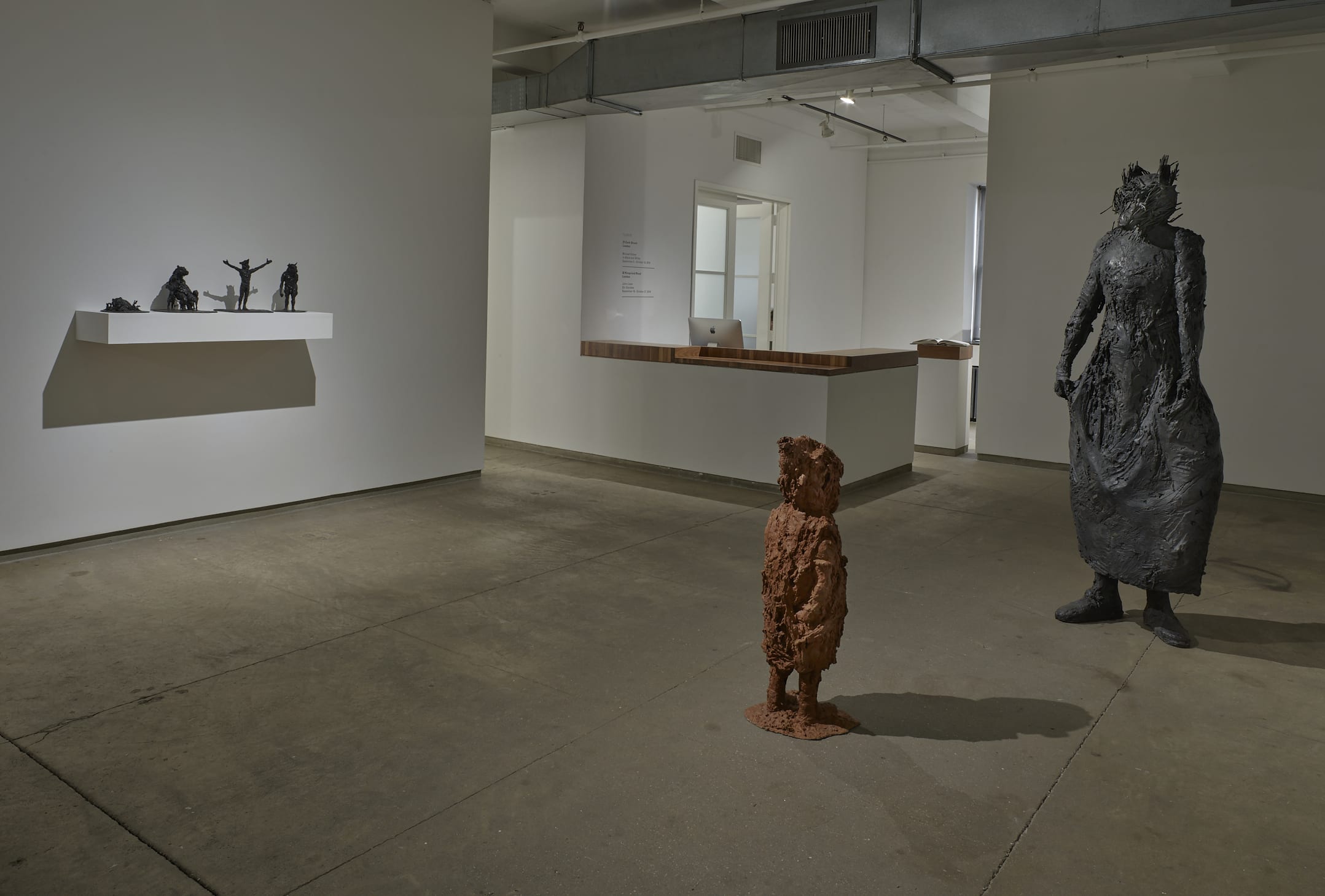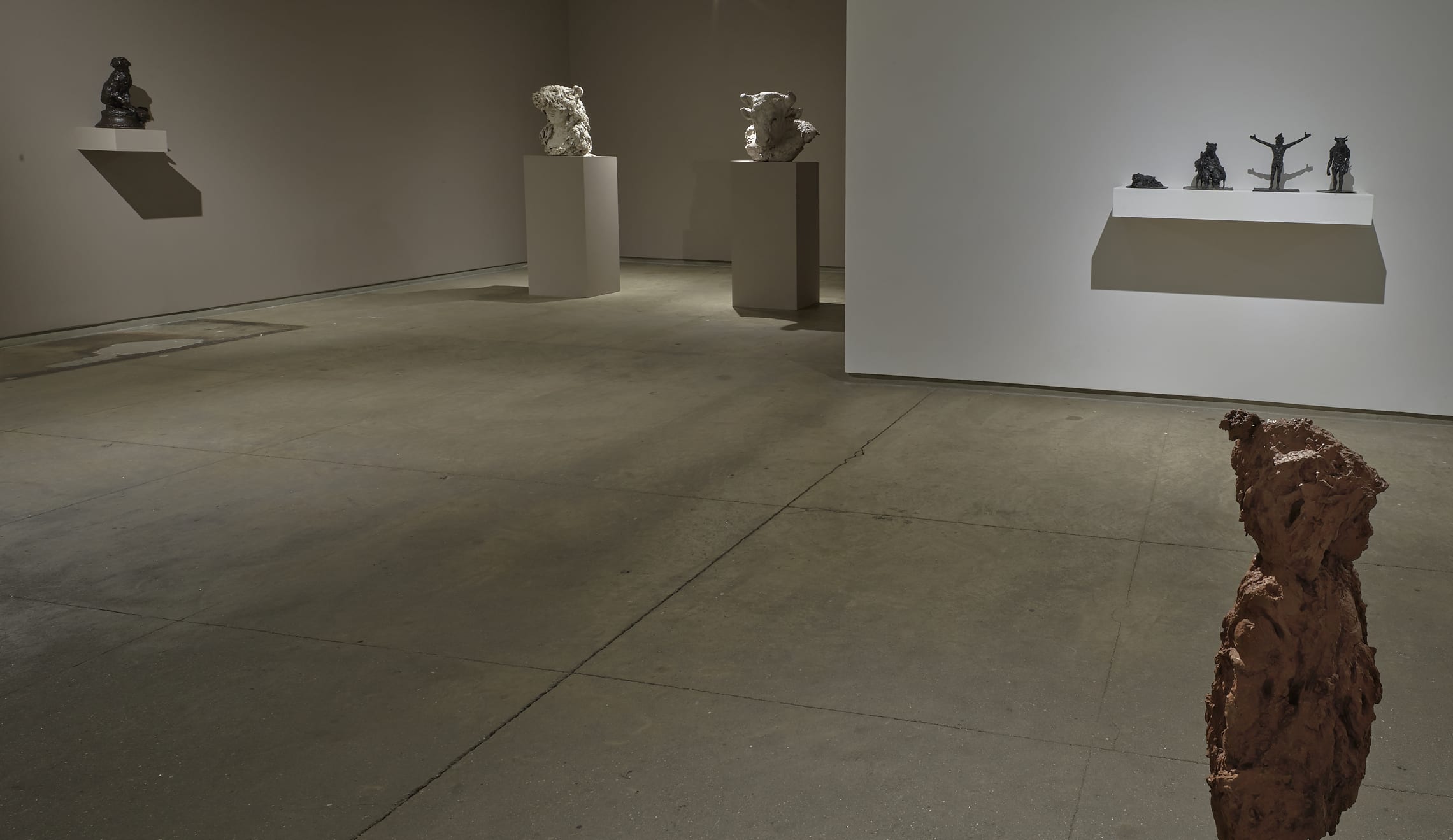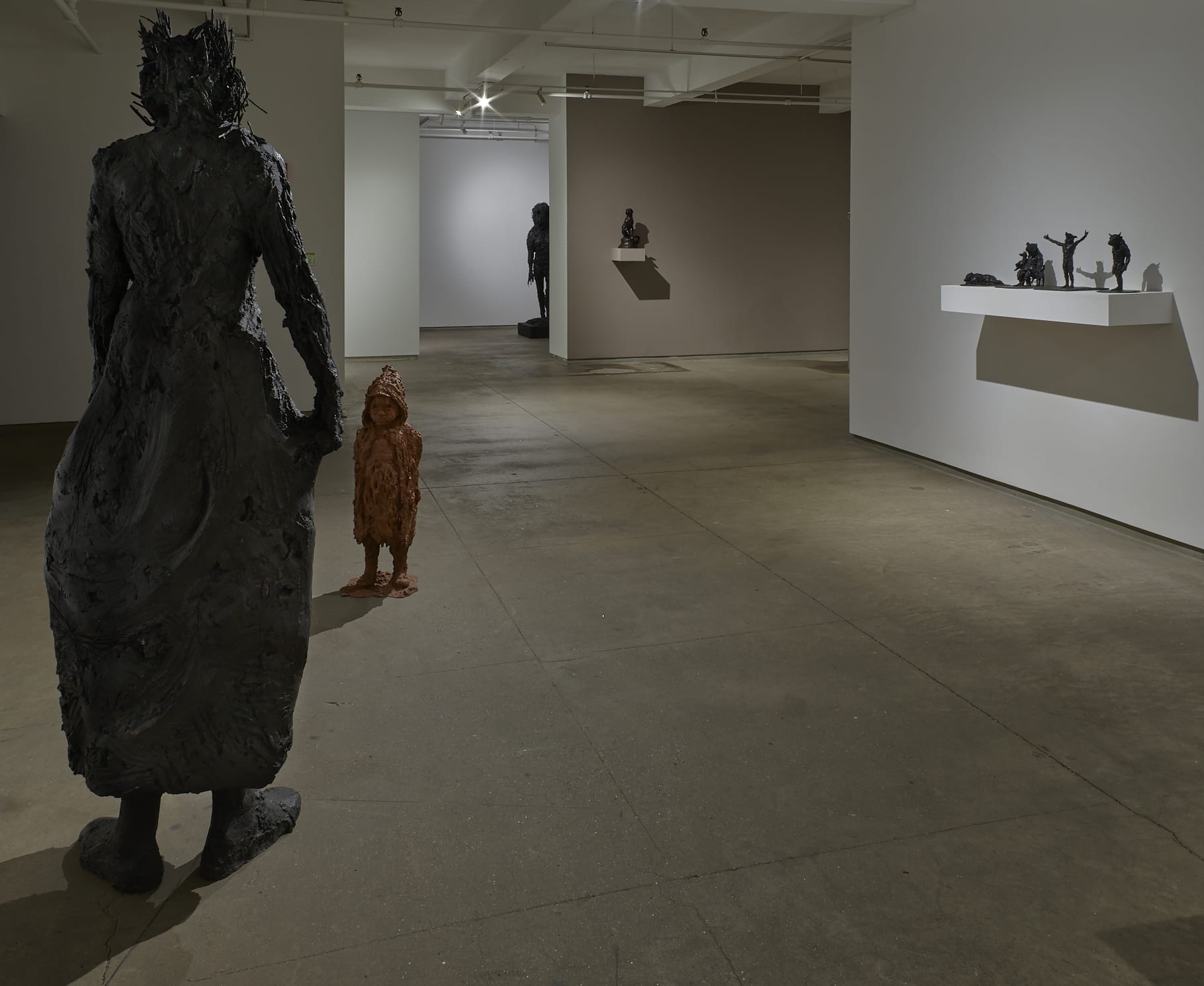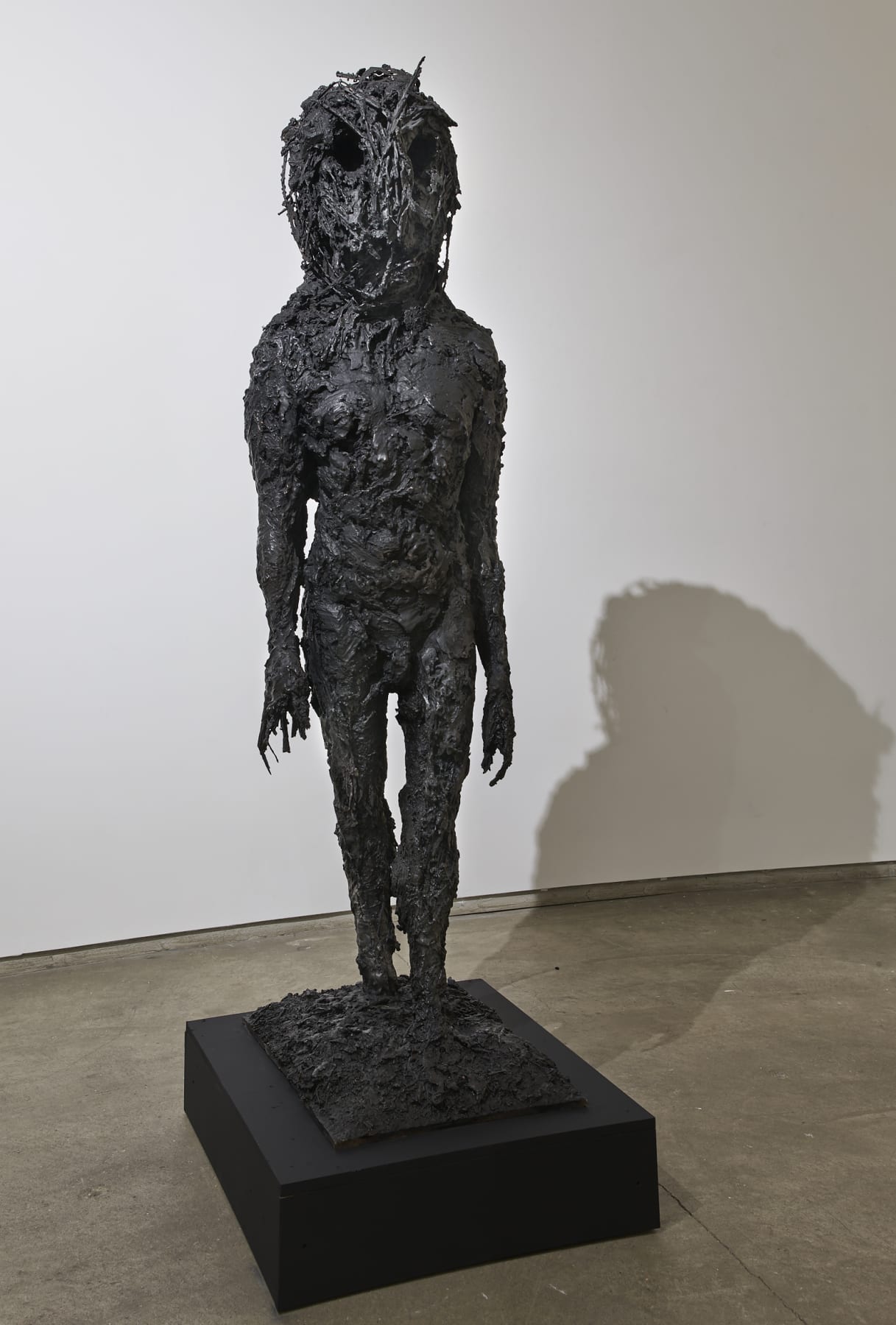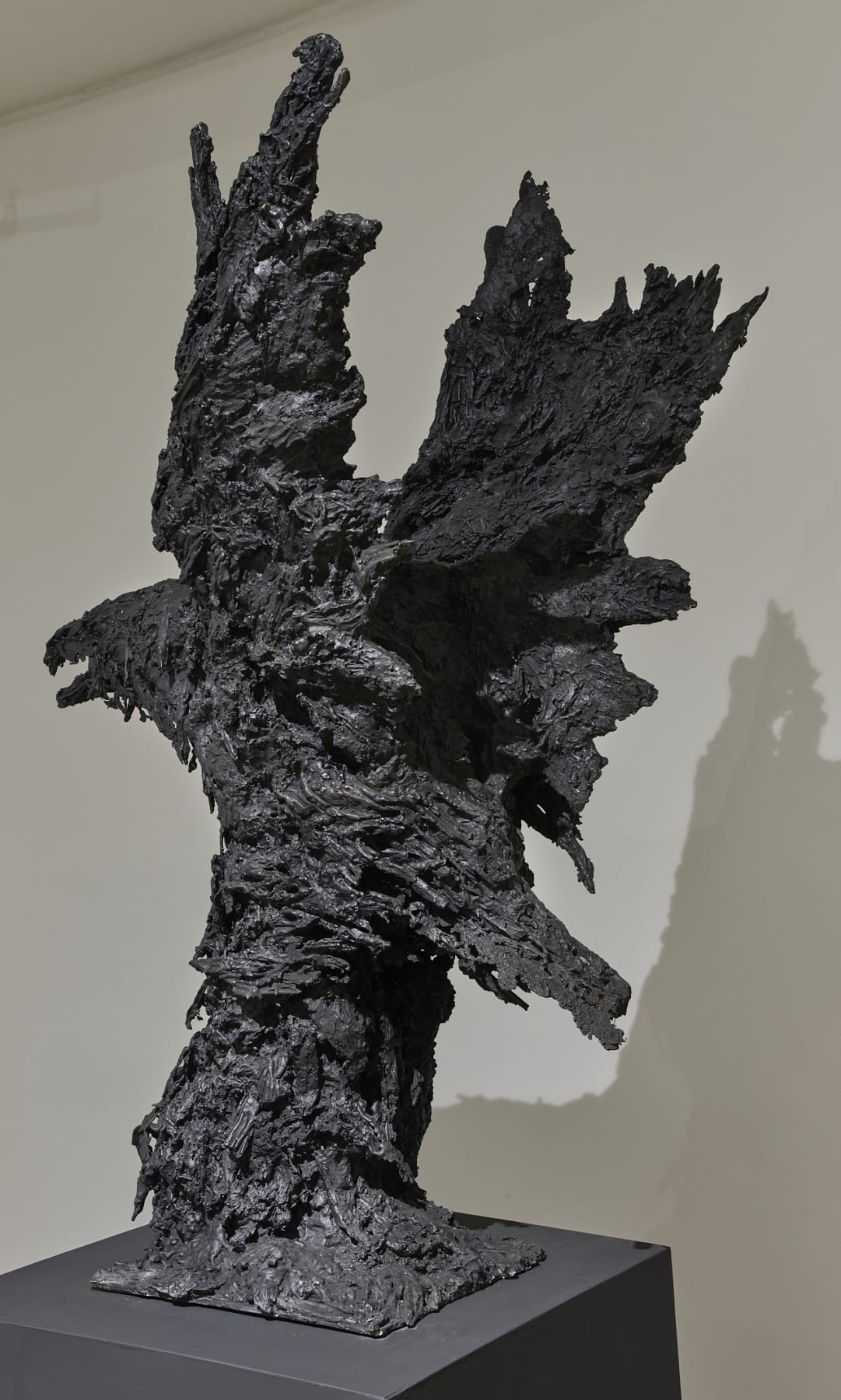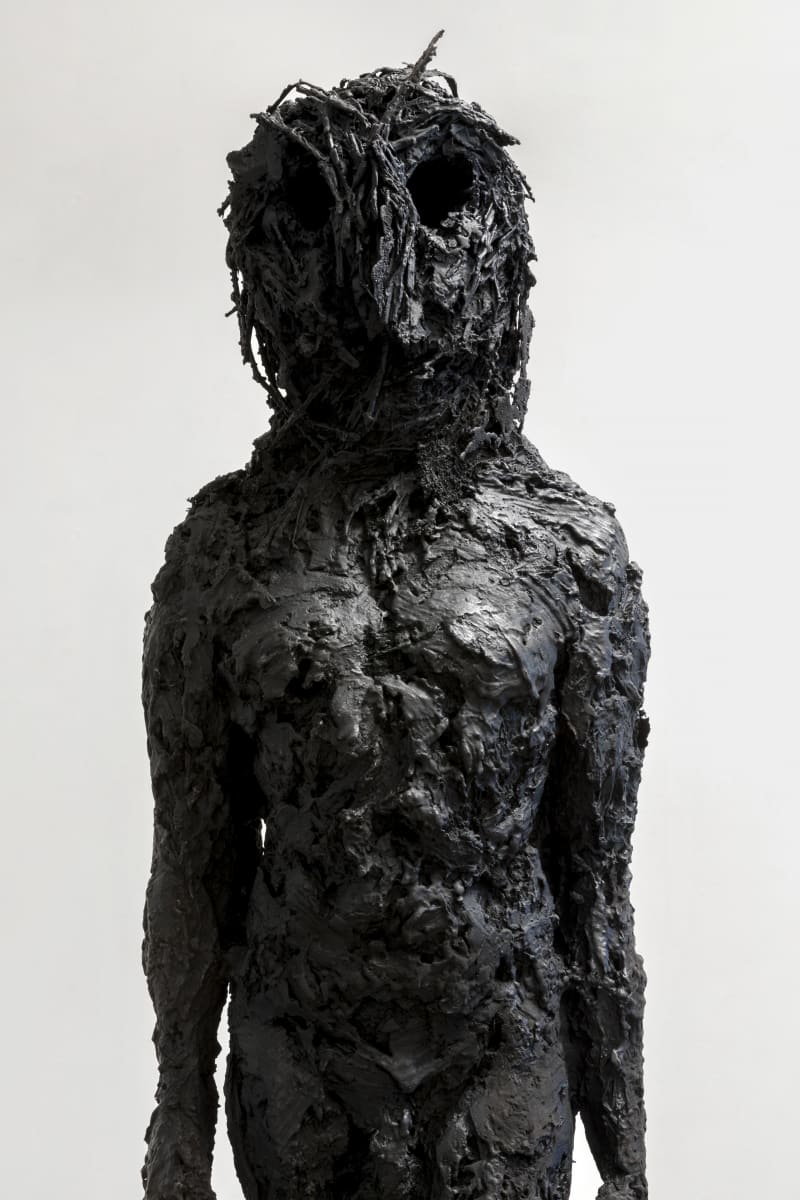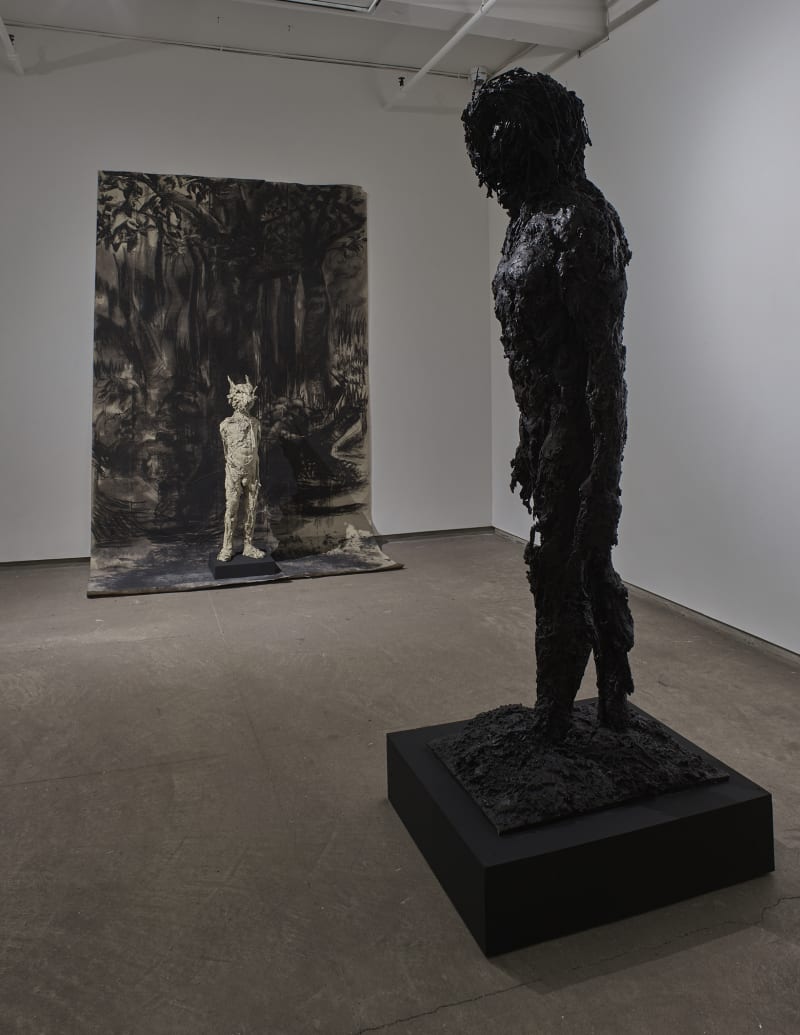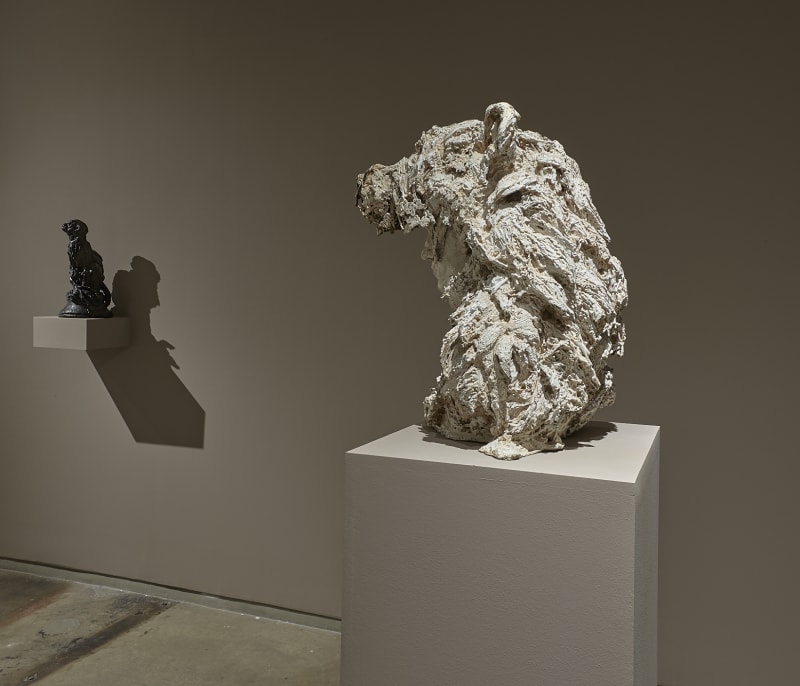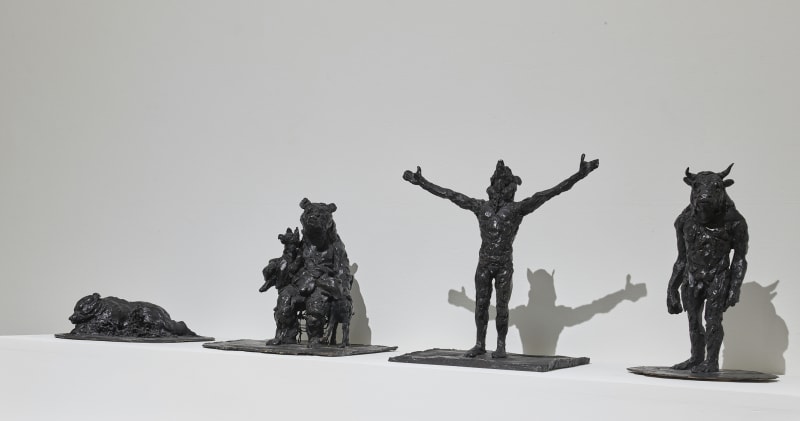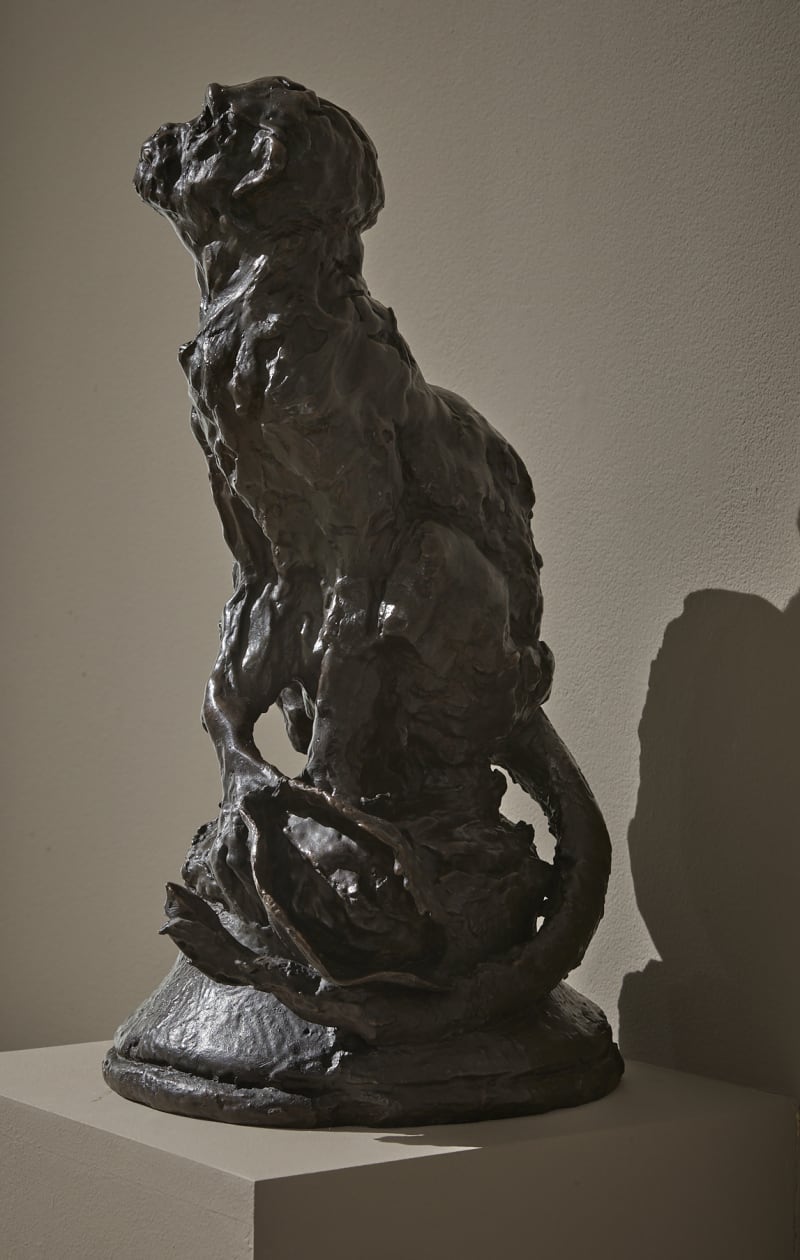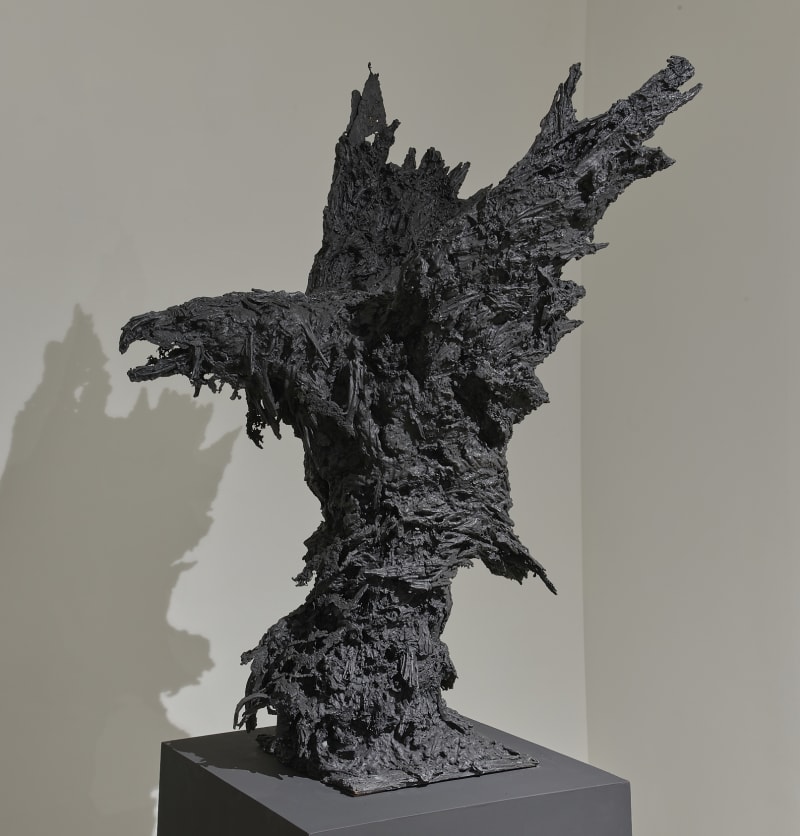Overview
The present exhibition brings together works from key periods in Hicks’ career from the 1990s to the present day, and will be the first exhibition of works created entirely in bronze.
For the past four decades British artist Nicola Hicks’ practice has centered around a world populated by a cast of humanized creatures and beastlike humans, expressing the universal, often darker aspects of humanity. The present exhibition brings together works from key periods in Hicks’ career from the 1990s to the present day, and will be the first exhibition of works created entirely in bronze.
Hicks’ characters frequently resemble figures from common myths and shared stories, using a distinctive personal vocabulary to establish a connection between ancient and contemporary worlds. Central to this exhibition are works that involve themes of childhood and coming-of-age, often drawn from the perspective of the maternal gaze.
In the work titled Recovered Memory, the two standing figures of a wolf-man looming over a tiny child, enact a sinister scenario reminiscent of Little Red Riding Hood. The wolf is a recurrent figure in Hicks’ work, often interpreted as engendering childhood fears.
The newly-cast bronze sculpture Brave (loaned by the Yale Center for British Art), depicts the figure of a young boy, who adapts to the susceptibilities of youth by drawing his courage from the protective armour of a bearskin. Hicks continues to explore the fragile transition to adulthood in a work featuring a boyish figure with wolf’s head titled Show me a Man and I’ll Show you a Boy. The contrast between his proud, puffed out chest and diminutive frame reflects a jarring distinction between the innocence of the inner child and the culturally-driven pressures of ‘being a man’.
Other hybrid characters continue the transition into manhood, such as the recent work Owl Boy, where the heavy eyelids on the owl-human form allude to a nocturnal existence, and the nerve-ridden, fractured feeling of adolescence. In Relic, the fragmented bull’s head and human torso represents a more ancient male character, who appears to be alone in the world and out of sync with contemporary times. Hicks describes the Minotaur’s otherness as relating to the ‘otherness of men’, suggesting that the Minotaur motif, in her vocabulary, might also at times relate to a female sexual power and energy.
Originally created using a mixture of plaster and straw, the bronze casting process harnesses and preserves the haptic energy of their fragile surfaces, with patinas in earthern, black or white tones, recalling timeless natural substances derived from the earth, such as oil, clay, chalk or lime.
The present exhibition brings together works from key periods in Hicks’ career from the 1990s to the present day, and will be the first exhibition of works created entirely in bronze.
